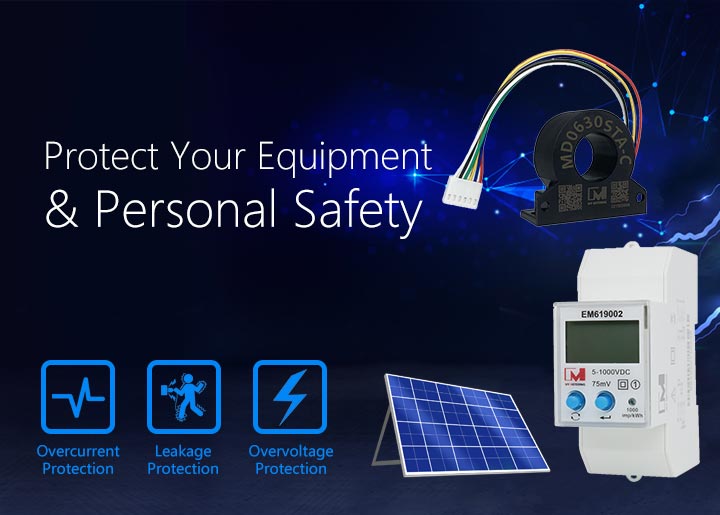Why does the solar photovoltaic inverter need Type B RCMU?
New energy is the focus of future development and has attracted everyone's attention. Among them, photovoltaics have the advantages of wide application range, easy use and no pollution. As an important equipment of the photovoltaic system, the photovoltaic inverter plays a vital role. The market competition is fierce. Many domestic photovoltaic inverter manufacturers have reduced production and manufacturing costs by localizing components, thereby increasing market share. The leakage current protection technology of photovoltaic inverters is also one of the important technologies of photovoltaics, and it has also attracted the attention of domestic and foreign manufacturers and users.
The leakage current in the photovoltaic system is essentially a common-mode current. The reason is that there is parasitic capacitance between the photovoltaic system and the earth. When the parasitic capacitance-photovoltaic system-grid forms a loop, the common-mode voltage will generate common-mode current on the parasitic capacitance. When the photovoltaic system is equipped with an industrial frequency transformer, the parasitic capacitance between the transformer windings in the loop is relatively high, which can suppress the common-mode current generated by the common-mode voltage in the loop to a certain extent. However, in a photovoltaic system without a transformer, the loop impedance is low, and the common-mode voltage will form a large common-mode current. However, transformer-type inverters have been eliminated by the market due to their bulky size, high cost, and low efficiency. Therefore, special attention should be paid to the leakage current problem of photovoltaic systems.

Related standards for leakage protection of photovoltaic systems
According to the provisions of 7.10.2 of the national energy standard NB/T 32004-2013 (as shown in Figure 5), the inverter should provide leakage current detection function in any case where the inverter is connected to the AC grid and the AC circuit breaker is disconnected. The leakage current detection should be able to detect the total current including the effective value of the DC and AC parts, and the continuous residual current. If the continuous residual current exceeds the following limit, the inverter should be disconnected and a fault signal should be issued within 0.3s:
1> For inverters with a rated output not greater than 30KVA, 300mA.
2> Applicable to inverters with a rated output greater than 30KVA, 10mA/KVA.
According to the requirements for residual leakage current mentioned in the general requirements of 4.8.3.5 of IEC62109-2, the requirements for leakage detection limits for non-isolated photovoltaic inverters are the same.
RCMU devices for leakage current of photovoltaic systems
According to the leakage waveform of leakage current detection, leakage sensors can be divided into AC leakage sensors, A leakage sensors, and B leakage sensors.
(1) AC residual current protection device: only reliably protects against suddenly applied and slowly rising sinusoidal AC residual current.
(2) A residual current protection device: on the basis of AC type, it adds reliable protection for residual current containing pulsating DC components.
(3) B residual current protection device: on the basis of A type, it adds reliable protection for smooth DC leakage and high-frequency composite wave residual current.




